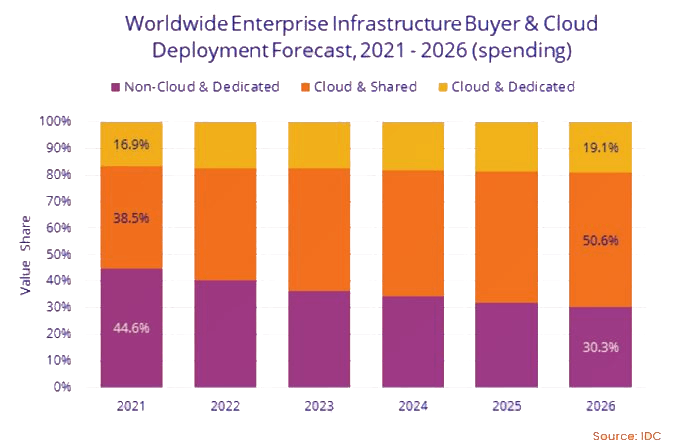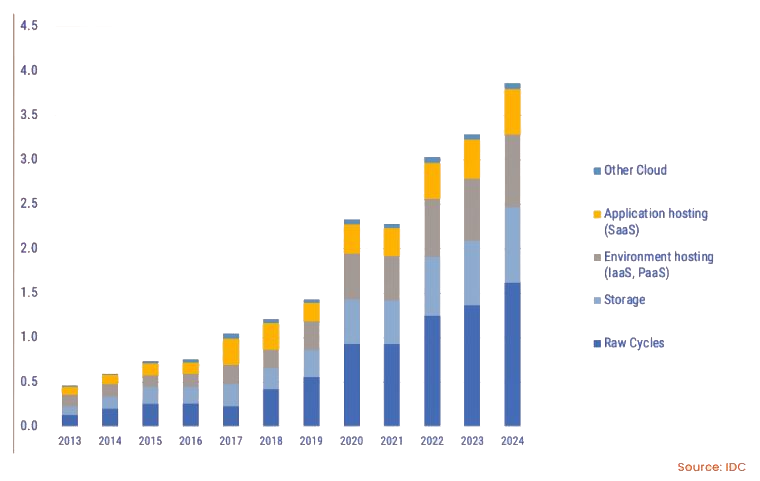Cloud computing enables employees to efficiently collaborate across different locations by facilitating simultaneous syncing, working, and sharing of documents and records in real-time.
Scale up operations quickly to meet greater usage needs, and scale down just as quickly, if resources are unused.
After moving to the cloud, there is no longer a concern with regard to power needs, storage needs, expensive computer hardware, or software updates.

Instead of months or years, it takes a matter of a few days to strategically develop, acquire, construct, and implement cloud-based services and an internal IT infrastructure with internal people.
Moving applications, infrastructure, or platforms to a cloud model can result in substantial savings in your data centre.
Cloud IT service providers offer higher security and data integrity levels.
The task of releasing updates and patches is simpler.
Worldwide Public IT Cloud Services Spending by Segment In $90.2 Billions

Development of new product and services
Faster return on Investment
Reducing resource waste
Speed of deployment
Lower total cost of ownership
Replacing on-premise legacy technology
Enabling business continuity
Improving customer support services
Great Flexibility and Agility
Innovation enablement
Gaining a competitive edge

The more common approach is to develop and manage an enterprise’s cloud technology stack in collaboration with public cloud service providers. It is best to explore a second or third service provider for scaling up once you have reached a particular scale and level of maturity.
Managing infrastructure as code in the public cloud, demands personnel with cloud expertise who are familiar with the public clouds computing, networking, storage, and security protocols. This generally entails a significant upskilling of the infrastructure organization and the operating model. The management and configuration of the production environment must be delegated to specific teams.
To meet the security and capacity demands of the public cloud, an assessment of the existing applications’ infrastructure and layers is necessary. These applications need to be in-built and operate automatically. By developing a strong business case for legacy application modernizing, planning the migration schedule around significant application upgrades or replacements, and implementing core solutions (such API frameworks) to facilitate repair, businesses can overcome this obstacle.
Cloud applications must be developed quickly and securely by skilled resources. To achieve this, companies must hire and train cloud specialists, integrate them into development teams, retrain or upskill the current workforce, and set up digital innovation labs as needed with a focus on cloud development. This bold strategy requires strong leadership commitment, time, and money but it is the fastest path to transformation.

High Performance computing (HPC market), projected to exceed $3.8 billion as a segment by 2024.


Necessary cookies are absolutely essential for the website to function properly. This category only includes cookies that ensures basic functionalities and security features of the website. These cookies do not store any personal information.
Any cookies that may not be particularly necessary for the website to function and is used specifically to collect user personal data via analytics, ads, other embedded contents are termed as non-necessary cookies. It is mandatory to procure user consent prior to running these cookies on your website.